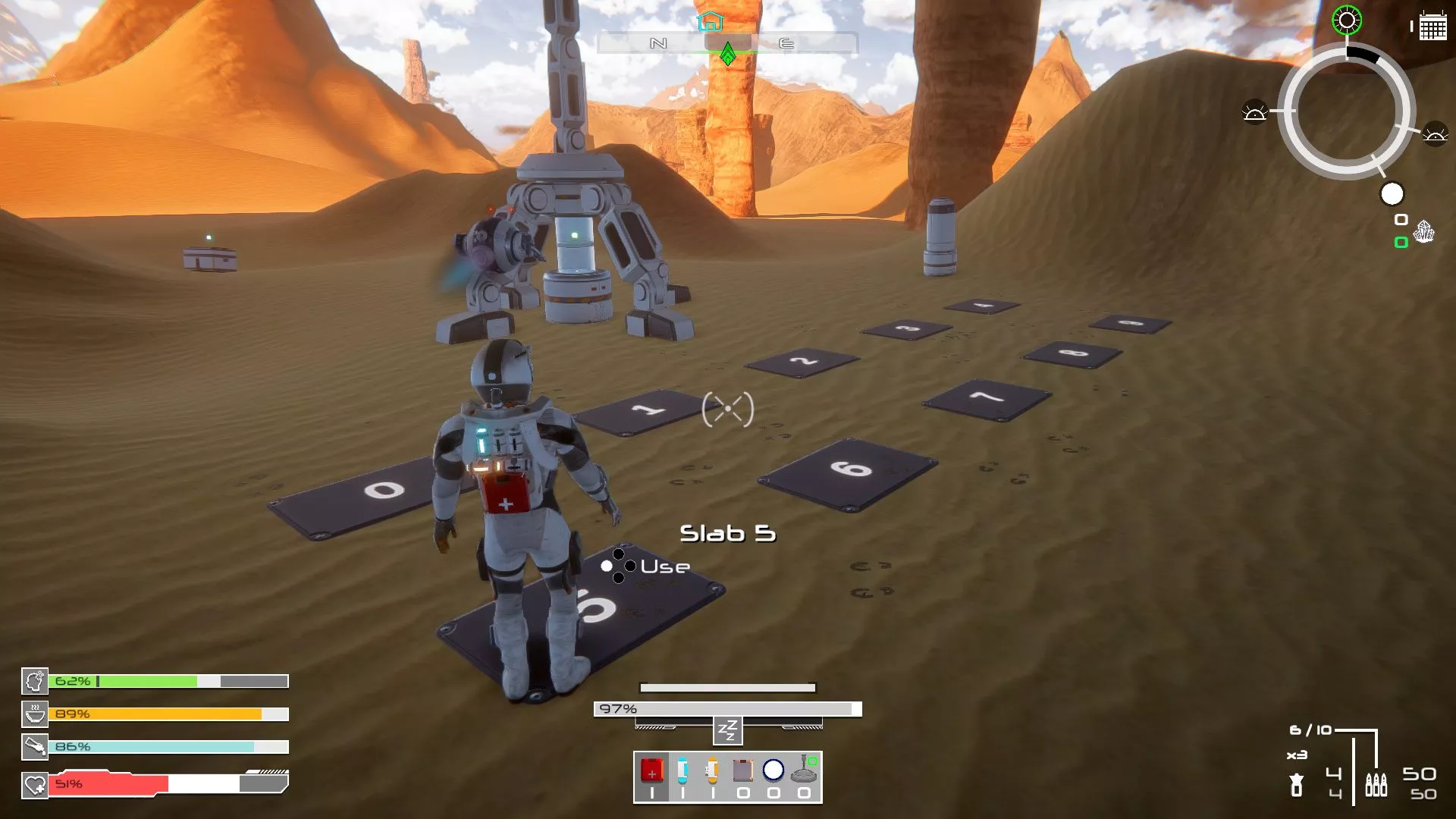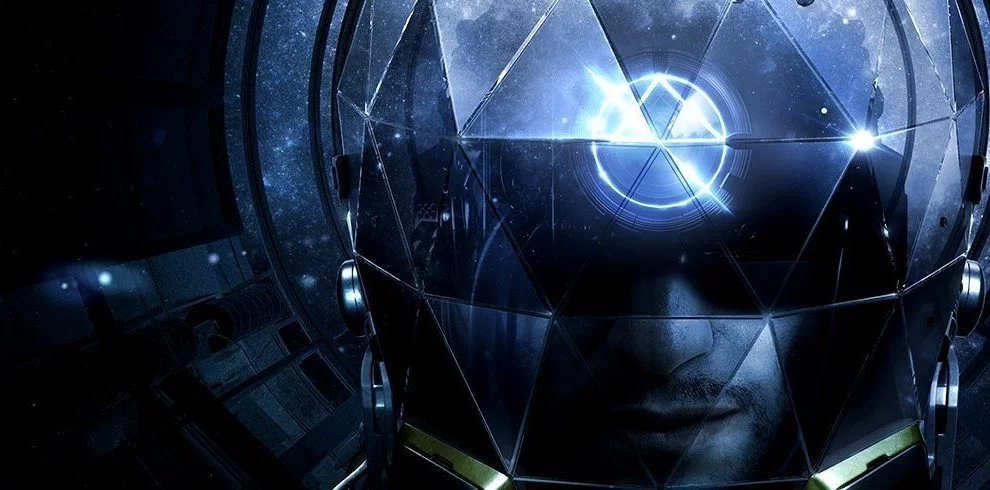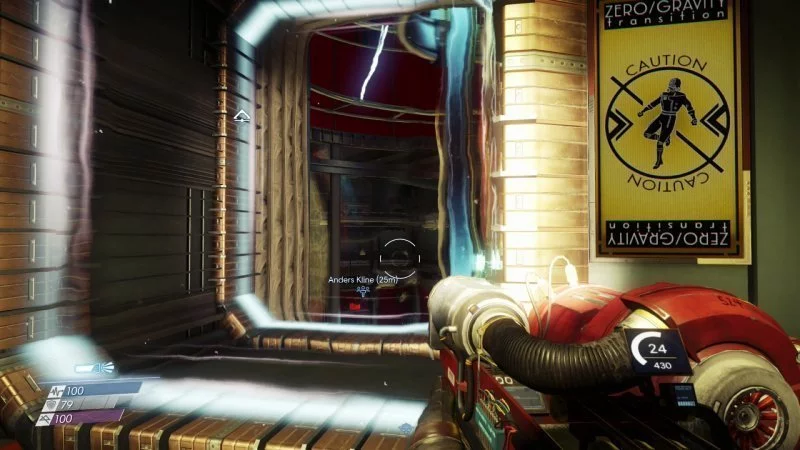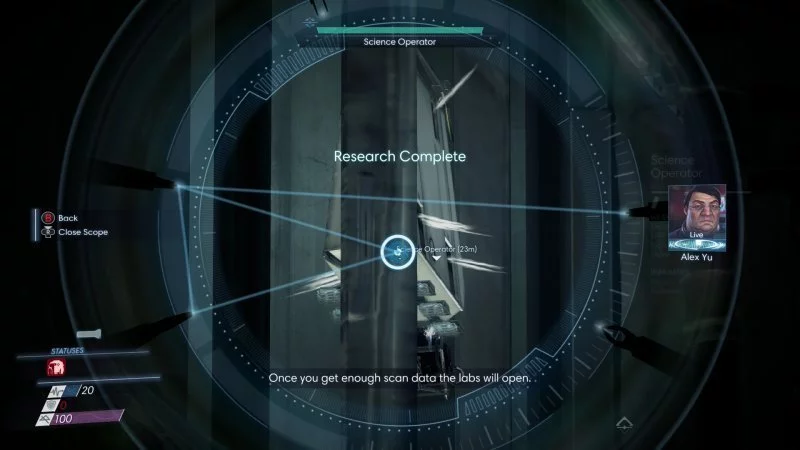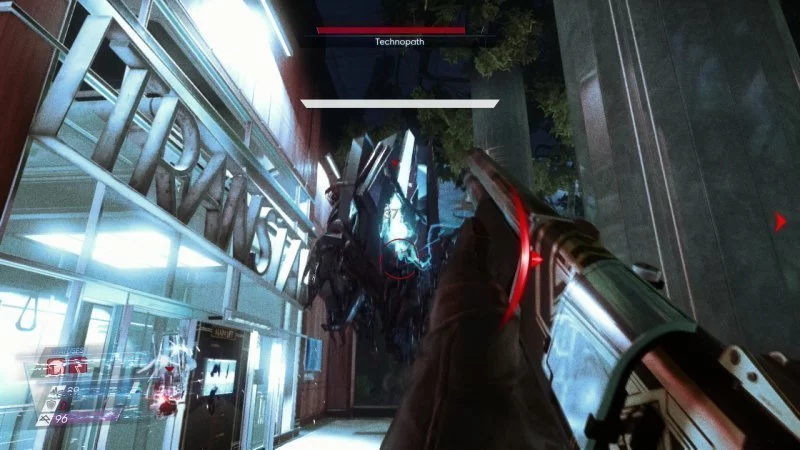Arkane has delivered the goods with Prey.
A vast departure from the likes of Dishonored, Prey – alike only in name with Human Head Studios’ 2006 title – drops a level-by-level approach in favour of what Arkane calls “open space station” play. Protagonist Morgan Yu – who can be played as either a female or male – is dropped loose on Talos 1 after one of the most memorable game openings since the original Bioshock. Yu is practically alone on a station once bustling with life, lacking short-term memory and struggling to put the pieces of what happened back together.
Amidst the chaos, Yu encounters the Typhon, a malicious race of aliens made up of different manifestations of black, oily goo. The grunts, Mimics, have gotten the most press in the lead up to Prey — they’re shapeshifters, able to turn themselves into (basically) anything you can see. The moment Yu lets her guard down is when that coffee mug to your right decides to leap for your throat. Players are taught almost immediately that they’re best handled with a 1-2 combo of GLOO gun to freeze them in place, followed by a couple deft swings with a hefty wrench. If you’re thinking of Bioshock or System Shock at this point, you won’t be alone.
The moment you enter the station’s lobby, the sky’s the limit; the way in which you achieve your goals is entirely up to you. You can empower yourself to lift heavy objects that block doorways, find an opening through a window or maintenance tunnel to get around that, or — and this is my favourite — throw a Recycler Charge at your obstacle to reduce it, Star Trek replicator-style, to mere cubes of matter. Yu’s GLOO gun can also be used to create hand- and footholds to scale large walls, giving her access to areas of the station she may not be prepared for. Those who love Dishonored 2’s stealth will feel quite at home here — enemies can be ridiculously tough. Yu quickly learns that running away from – or better yet, entirely avoiding – fights with large numbers of Typhon is the best chance of survival.
To aid with that, Yu is encouraged to use Neuromods. Separated into two main streams, you can empower your inherently human traits or use a sci-fi camera to research, then equip, the powers of the Typhon themselves. The latter powers are by far the most rewarding to use – it’s great fun to mimic a chair (or even a Mimic) or use telekinetic powers to deal with problems. Doing so, however, comes with its own set of new problems – if you infuse Typhon DNA on your person, Talos 1’s defences will turn against you. Moreover, and as your helpful companion AI quickly exclaims, Typhon powers seemingly come at the cost of your humanity. As you’d imagine, your choices have a lot to do with the game’s ending.
Those who want to remain entirely devoid of Neuromods can also do so, instead relying on powerful Chipsets that can be installed into your suit. They range from faster Typhon scanning to resistance to certain attacks. If you go the purist route, you’ll be placing an emphasis on exploration, having to then scour the station to find keycodes and keycards that will let you progress to other areas inside Talos 1. The non-Neuromod route is by far the most difficult; Yu won’t be able to hack doors, move heavy objects or upgrade weaponry and will move through the game with limited health and stamina.
No matter how you choose to tackle Yu’s goals, Prey is a sci-fi fan’s dream, with equal parts Alien and Dead Space. On higher difficulties, ammo and health are scarce (unless you cheese the recyclers); Prey then becomes an (unintentional?) survival horror game, and a great one at that. Every encounter with the Typhon is weighty; each one could be your last. Sequences in microgravity, either outside the station or in an area with a hull breach, only add to the fun. Arkane has nailed the feeling of weightless locomotion, giving Yu a real sense of freedom (and terror) whilst out in a vacuum.
While the open-endedness of Arkane’s design should be applauded, its ambition is also its downfall. Talos 1 is huge, and most players will find it a confusing labyrinth at the best of times. Most pathways are blocked, meaning you’ll be forced to constantly backtrack to get your next objective. While that’s not necessarily a bad thing, one- to two-minute loading times between each area certainly are. At Prey’s climax, you’re forced to travel from one end of the station to the other, and you’ll quite literally spend more time in loading screens than getting to work. The load times kill any sense of urgency or tension that Arkane is trying to impress upon you.
Objective markers do little to help with the confusion. Especially in the Cargo Bay area, markers seemingly point to the sky, as if you are supposed to know how to get to them. You get a side-quest that involves finding the body of Dr. Bellamy early on; I managed to fluke it at one point, getting to within a metre of his body, but found it was locked behind a door without a keycode or keycard. I was never able to figure out how to get back to that area, despite a solid hour of trying.
Prey also suffers from the failings of another sci-fi epic, Mass Effect, in that a host of choices boil down to considerably less. Talos 1 is bustling with life (or is that corpses?) – while you can go out of your way to track down all 250+ survivors, ultimately deciding their fate at that time, those lives ultimately mean nothing at the end. Prey’s conclusion does live up to the claim of Arkane’s Raphael Colantonio: despite multiple endings, most of them will work as canon should a sequel end up on store shelves.
Despite those rough patches, Prey is wholly engrossing, begging the player to solve Talos 1’s many mysteries. It works well as a shooter, a stealth game and carries a 70s sci-fi vibe that is nothing short of a delight to experience.
 |
|
The good
|
The bad
|
Prey was reviewed using promotional codes on Windows PC, Xbox One PS4, as provided by the publisher — the lead platform was Xbox One. Click here to learn more about Stevivor’s scoring scale.
This article may contain affiliate links, meaning we could earn a small commission if you click-through and make a purchase. Stevivor is an independent outlet and our journalism is in no way influenced by any advertiser or commercial initiative.


